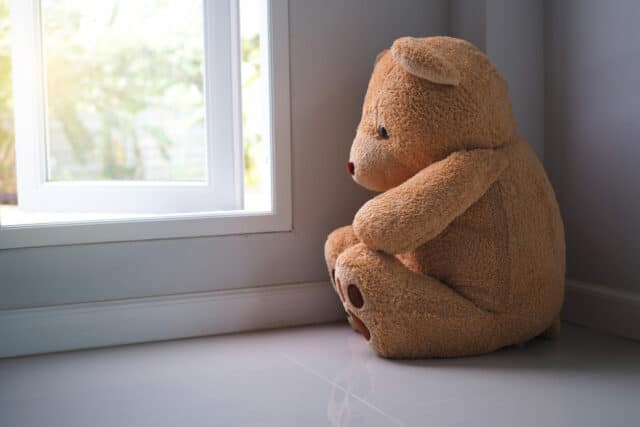
Anxiety is a common human experience that most people will have to deal with at some point. For Autistic people, however, it often takes on a unique and complex dimension. Over the years, research has showcased a close relationship between autism and anxiety, revealing a significant challenge that many Autistic individuals face.
There is a lot of evidence to show that Autistic people have higher levels of anxiety and anxiety disorders compared to the general population. A 2011 meta-analysis conducted by van Steensel et al., (2011) examined 31 different studies involving autism and anxiety disorder assessments and found that approximately 40% of young Autistic people had at least one co-occurring anxiety disorder. To put things into perspective, anxiety disorders in neurotypical children have been estimated to occur in 2.2% to 27% of the population. The prevalence rate of anxiety disorders in Autistic adults is similarly high, with estimates taken from a systematic review and meta-analysis ranging from 27% to 42% for any anxiety disorder (Hollocks, et al., 2018).

Research shows that autism and anxiety are connected.
Types of anxiety commonly seen in Autistic youth
Anxiety experienced in autism isn’t limited to a single form. Several types of anxiety disorders are prevalent among Autistic children and adolescents, including some of the types listed below. Aside from panic disorder, the prevalence rates seen for the below anxiety disorders are more than double that of the general population:
- Specific phobias: An intense, irrational fear of something that poses little or no actual danger. Thinking of or encountering the object or situation can bring about severe anxiety or distress. Some common phobias include fear of certain animals and fear of needles. Specific phobias are the most common type of anxiety disorder seen in Autistic children and adolescents, at a rate of about 30% (van Steensel et al., 2011).
- Social anxiety: An intense or persistent fear of being watched or judged by others. Autism is often characterized by differences in people’s social communication and interaction compared to neurotypical peers. The challenges associated with understanding non-verbal social cues and engaging in social interactions can give rise to social anxiety, which in turn can lead to avoidance of social situations. Roughly 17% of Autistic youth have a social anxiety disorder (van Steensel et al., 2011).
- Obsessive-Compulsive Disorder (OCD): Uncontrollable, reoccurring thoughts (obsessions) that cause anxiety and behaviours (compulsions) that one feels the urge to repeat to get relief from the thoughts. Both Autism and OCD often involve repetitive or ritualised behaviours and a focus on specific interests, which can sometimes make it difficult to tell the two apart. OCD is estimated to affect approximately 17% of Autistic youth (van Steensel et al., 2011).
- Agoraphobia: A fear or anxiety in which someone believes their environment to be unsafe with no easy way of escape. This often extends to busy public places, like shopping centres or public transport. Agoraphobia causes some people to stay in environments they consider to be safe, like their homes, for long periods of time. In severe cases, some people are unable to leave their homes for months, or even years. Agoraphobia is estimated to impact up to 17% of Autistic youth (van Steensel et al., 2011).
- Generalised anxiety disorder: Excessive worry or fear about everyday issues with no clear cause or reason. Generalised anxiety disorder is estimated to impact 15% of Autistic youth (van Steensel et al., 2011).
- Separation anxiety: Extreme anxiety due to the separation or anticipated separation from a figure of attachment. This often relates to caregivers or other family members but can also extend to animals or even places. Separation anxiety has an estimated prevalence rate of 9% for Autistic youth and has appears to be more common in younger children (van Steensel et al., 2011).
- Panic disorder: Frequent and unexpected panic attacks with no clear cause. Panic disorder was the least common co-occurring anxiety disorder found in van Steensel et al., (2011) study, only affecting 2% of Autistic youth.
Unique aspects of anxiety in autism
Some aspects of anxiety, like automatic and unhelpful thoughts and physiological hyperarousal (e.g., paranoia, jittery feelings, irritability), are shared between Autistic and neurotypical people. However, the experience of anxiety in Autistic individuals can also differ in notable ways from those without autism (Ollendick & White, 2012).
One crucial factor is the interaction between social differences inherent in autism and the anxiety they may induce when interacting with neurotypical peers. The difficulty in navigating social situations, “fitting in”, understanding nonverbal cues and managing sensory sensitivities can all contribute to heightened anxiety in everyday interactions and can lead to Autistic burnout. Many Autistic people also rely on routine and predictability, so changes in routines or unexpected events can also cause overwhelming anxiety. This can lead to heightened stress responses and difficulties in adapting to new or unexpected situations.
Challenges in diagnosis and treatment
Identifying anxiety in Autistic individuals can be challenging due to overlapping symptoms. Repetitive behaviours, avoidance, and communication differences can mask anxiety symptoms, making it difficult to distinguish Autistic features from anxiety symptoms and anxiety symptoms from anxiety disorders (van Steensel et al., 2011). In other words, many Autistic children can display symptoms of different anxiety disorders but may not meet the diagnostic criteria for a specific anxiety disorder. This may be due to their anxiety not interfering enough with their day-to-day life, or to the view that the symptom is already explained by their autism diagnosis.
When it comes to treatment for anxiety, tailored approaches are essential. Autism-specific therapies that acknowledge sensory sensitivities, communication differences and unique stressors are crucial. Despite the substantial overlap between autism and anxiety, research is still in the early stages of identifying effective treatment approaches for Autistic people.
Cognitive Behavioural Therapy (CBT) for example, is often considered to be a first line treatment for anxiety disorders in neurotypical people. However, it has only been in the past decade or so that efforts have been made to suitably adapt CBT for the unique needs of Autistic youth. These modifications can include things like increased caregiver involvement, simplifying or reducing the cognitive restructuring component of CBT, and attempting to personalise the treatment by incorporating the child’s interests (Nadeau et al., 2011; Bemmer et al., 2021). The results of modified CBT have been very promising, but research is still being conducted to build a stronger evidence base, particularly for use with Autistic adults.
Medication, like Selective Seretonin Reuptake Inhibitors (SSRIs), is often used to help manage anxiety in neurotypical people. However very little good quality research has been conducted to determine the efficacy of SSRIs or other ‘anti-anxiety’ medication when used to treat anxiety in Autistic people (Nadeau et al., 2011; Menezes et al., 2022).
Summary
In essence, anxiety and autism often go hand in hand; so much so that even some experienced clinicians have trouble deciding whether it is autism alone, anxiety alone, or both together! Many people experience anxiety at different points in their lives, but Autistic youth may be more than twice as likely to experience anxiety or be diagnosed with an anxiety disorder compared to their same age peers. This higher rate of anxiety can also be accompanied with some challenges and triggers related to autism that can make the anxiety worse. This could be environmental sensory sensitivities, routine disruption, or difficult or confusing social interactions where Autistic people may feel the pressure to mask in order to fit in.
Research on best treatment practices is still emerging, although modified and tailored versions of existing anxiety therapies, like Cognitive Behavioural Therapy, appear to be promising. To be effective, though, they need to be delivered by a mental health professional who is experienced with Autistic clients. If you or a loved one are Autistic, anxious and you want to learn more about the different types of anxiety Autistic people face, their experiences, and what strategies might be helpful, then this journal is for you!
Ashe Yee (BPsych, First Class Honours) joined the Altogether Autism team as a researcher in 2019 and is passionate about delivering evidence-based information.
This article first appeared in the Altogether Autism Journal, 2023.
References
Bemmer, E. R., Boulton, K. S., Thomas, E. E., Larke, B., Lah, S., Hickie, I. B., & Guastella, A. J. (2021). Modified CBT for social anxiety and social functioning in young adults with autism spectrum disorder. Molecular Autism, 12(1).
Hollocks, M. J., Lerh, J. W., Magiati, I., Meiser-Stedman, R., & Brugha, T. S. (2018). Anxiety and depression in adults with autism spectrum disorder: A systematic review and meta-analysis. Psychological Medicine, 1-14.
Menezes, M., Harkins, C., Robinson, M. F., Pappagianopoulos, J., Cross, R., Vasa, R. A., & Mazurek, M. C. (2022). Treatment of anxiety in autistic adults: A systematic review. Research in Autism Spectrum Disorders, 99.
Nadeau, J., Sulkowski, M. L., Ung, D., Wood, J. J., Lewin, A. B., Murphy, T. K., May, J. E., & Storch, E. A. (2011). Treatment of comorbid anxiety and autism spectrum disorders. Neuropsychiatry, 1(6), 567-578.
Ollendick, T. H., & White, S. W. (2012). The presentation and classification of anxiety in autism spectrum disorder: Where to from here? Clinical Psychology (New York, N.Y.), 19(4), 352–355. https://doi.org/10.1111/cpsp.12013
van Steensel, F. J. A., Bogels, S. M., & Perrin, S. (2011). Anxiety disorders in children and adolescents with autistic spectrum disorders: A meta-analysis. Clinical Child and Family Psychology Review, 14, 302-317.


